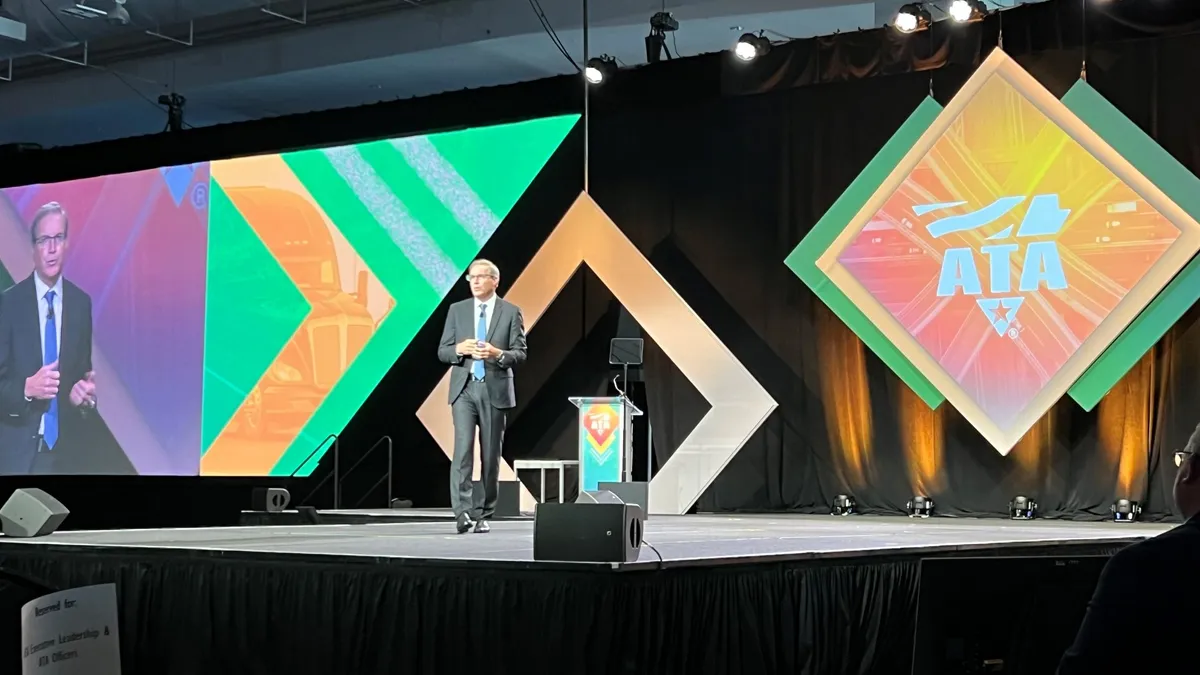NASHVILLE — Mike Pelaez watches the weather every day.
Snow, wildfires and other hazardous conditions affect truck drivers and customers alike, and the ability to build backup plans relies on knowing what’s in the forecast, said the VP of safety and compliance for Airgas Dry Ice and Airgas National Carbonation.
“Weather, as all of you know, is everything,” Pelaez said. “And not just cold weather. There's extreme hot weather, there's hurricanes, tornadoes — it's all weather. And if that's not in the top two or three things you're watching every day, then you're probably missing it.”
Carriers should prepare drivers in advance and equip them with snow cleats, driver alerts, safe park assist and other resources for safety, Pelaez and other members of an American Trucking Associations’ Management Conference and Exhibition panel said Oct. 14.
The ATA panel began with a moment of silence to honor those affected by the recent back-to-back hurricanes Helene and Milton. The panel topic’s inclusion in the trucking industry’s biggest annual conference highlighted an issue increasingly wreaking havoc on supply chains across industries.
Pete Palczynski, a Walmart Transportation driver and America's Road Team Captain, said he is confident driving in snowy conditions from 38 years of driving experience, plenty of it pedaling freight in the Northeast.
“But unfortunately, the thing that I don't have any control over is the vehicles on the road,” Palcynski said.
About 21% of the roughly 5.8 million crashes each year are related to adverse weather, said Lytx VP of Global Sales Strategy Jeff Martin, the panel’s moderator, citing Federal Highway Administration data.
Bob Viso, a former VP at U.S. Xpress, Total Transportation of Mississippi and Boyd Bros. Transportation, said he quickly learned the value of staging essential workers in hotels to ensure they could get into work.
Viso, now a Lytx program consultant, said his previous employers were often navigating storms with drivers who lacked Palczynski’s decades of experience and 2.8 million safe miles.
“We had younger folks that just were new in the industry,” Viso said. “Their ability to drive in some of these adverse conditions were different than others, so you had to take that into consideration as well.”

















